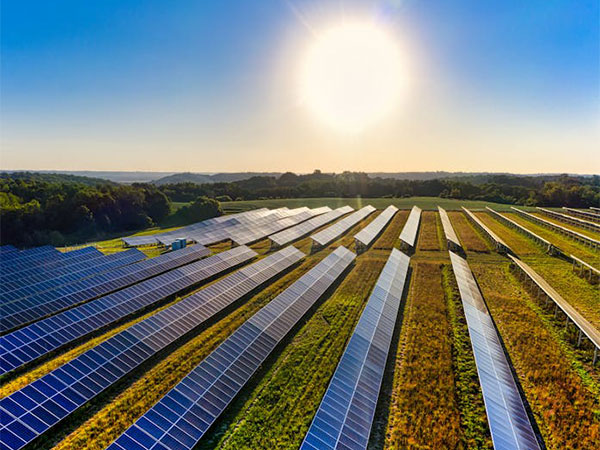
New Delhi: Karnataka and Gujarat showcased their leadership in the progress toward the clean energy transition, a report 'Indian States' Electricity Transition' (SET) by the Institute for Energy Economics and Financial Analysis (IEEFA) and Ember highlights.
The report highlighted that Karnataka and Gujarat showcased strong performance across dimensions, effectively integrating renewable energy sources into their power sectors, making strong strides in decarbonisation (the process of reducing or removing carbon dioxide emissions into the atmosphere).
The report evaluates the clean electricity transition preparedness at the subnational level.
In 2024, the report adds five more states, totaling 21 states and representing about 95% of India's annual power demand in the past seven financial years (FY) 2018 to 2024 (up to November).
This year, the assessment parameters have been updated to better align with states' electricity transition progress,incorporating stakeholder feedback and data availability.
According to the report, progress in states like Jharkhand, Bihar, West Bengal and Uttar Pradesh needs to improve, similar to last year's findings.
While these states are in the early stages of their transition, they now need to focus on increasing renewable energy deployment, enhancing short term market participation and strengthening their distribution companies.
The report was released when temperatures in India started to soar, leading to the Ministry of Power preparing for a projected peak power demand of 260 gigawatts.
Harsh summers also offer the chance to utilise more clean energy like solar power. Although, this requires the preparedness of states to transition to clean sources of electricity.
"Cyclical weather conditions coupled with faster economic activity is pushing India's peak electricity demand higher every year.
While the central government is taking steps to integrate more renewable energy into the grid, states, too, need to be prepared to do so.
Gauging subnational progress now requires constant monitoring of several parameters at the state level.
A purely national overview can often overshadow subtle intricacies at the state level, which may stymie the country's electricity transition," said the report's contributing author, Vibhuti Garg, Director - South Asia, IEEFA.
The report finds that while the national-level progress towards the electricity transition is progressing well, it is far more uneven at the state level.
"Some states have developed progressive steps, such as boosting decentralised renewable energy deployment, promoting solar pumps for agricultural needs, and enhancing storage solutions to ensure more renewable energy in their electricity systems.
But, the transition to clean electricity is still in its infancy in many states.
These states should look to accelerate the efforts to access the benefits of a transition to clean electricity and to ensure that they are not left too far behind the better-performing states," said the report's contributing author, Aditya Lolla, Asia Programme Director, Ember.
One of the major findings from the report was that several states are exhibiting preparedness to embrace electricity transition.
They perform well in the Readiness and Performance of the Power Ecosystem and Market Enablers dimensions but need to improve in the Decarbonisation dimension.
"Delhi's power system is well-prepared for decarbonisation, while Odisha has robust market enablers to support decarbonisation in the power sector.
However, their actual decarbonisation progress so far does not match their strengths in these aspects, highlighting the importance of performing well in both dimensions to effectively achieve decarbonisation goals," said co-author Neshwin Rodrigues, Electricity Policy Analyst, Ember.
"Each state faces unique challenges in decarbonising its power system, necessitating tailored policy interventions.
By tracking decarbonisation progress, assessing the power system's readiness for transition, and monitoring the advancement of market enablers, state-specific challenges and potential interventions can be better understood," says Neshwin.







